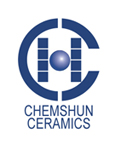Top articles
- Advantages of rubber ceramic composite wear plate
- What are the types of wear-resistant ceramic pipes?
- Alumina Ceramic Substrates: The Invisible Backbone of Modern Industry
- 99% Alumina Ceramic: The Superior Choice for Bulletproof Armor Materials
- Analysis of the Characteristics of Rubber Ceramic Composite Liners
- Excellent Ceramic Material—ZTA Toughened Alumina Ceramic
- Characteristics of Wear-Resistant Alumina Ceramic Tubes
- Wear resistant ceramic pipes for pneumatic conveying of lithium batteries
- What should be paid attention to when choosing to use wear-resistant ceramic linings
- The difference between wear-resistant ceramic pipes and traditional steel pipes
Latest articles
- Advantages of rubber ceramic composite wear plate
- What are the types of wear-resistant ceramic pipes?
- Why 99% alumina ceramics are the preferred material for bulletproof armor
- Alumina Ceramic Substrates: The Invisible Backbone of Modern Industry
- Chemshun High-Performance Ceramic Substrate Production Line Kiln Officially Ignited and Put into Operation!
- 99% Alumina Ceramic: The Superior Choice for Bulletproof Armor Materials
- Analysis of the Characteristics of Rubber Ceramic Composite Liners
- Excellent Ceramic Material—ZTA Toughened Alumina Ceramic
- Characteristics of Wear-Resistant Alumina Ceramic Tubes
- Wear resistant ceramic pipes for pneumatic conveying of lithium batteries
Your browsing history

Advantages of rubber ceramic composite wear plate
Rubber ceramic composite wear plate is a high-performance composite material that combines the excellent wear resistance of alumina ceramics with the elastic buffering characteristics of rubber. It is widely used in high-wear scenarios in heavy industrial fields such as thermal power, steel, mining, cement, etc. The following is a detailed introduction to its core features:
1. Excellent wear resistance
Chemshun alumina ceramics are the main material of the lining, and their alumina (AI203) content is usually ≥92%, and some high-purity products can reach more than 95%. Through the high-temperature (1700°C) sintering process, the hardness of the ceramic layer reaches Rockwell hardness HRA85-90, second only to diamond, and its wear resistance far exceeds that of traditional metal materials. For example, its wear resistance is equivalent to 266 times that of manganese steel and 171.5 times that of high-chromium cast iron. This feature allows it to extend its life by more than 10 times in equipment such as coal transportation systems, coal mills, hoppers, etc. that are subject to long-term material erosion.
2. Excellent impact resistance and buffering performance
The rubber layer is tightly combined with the ceramic through the vulcanization process, giving the lining excellent impact resistance. The elasticity of rubber can effectively buffer the impact of large pieces of material (such as ore and coal) falling from a high altitude, reducing the risk of ceramic fragmentation. For example, even if the vulcanized liner is bent 360°, the ceramic will not fall off. At the same time, the rubber layer can also reduce the noise and vibration generated during material transportation and improve the stability of equipment operation.
3. Resistance to extreme temperatures and chemical corrosion
Temperature resistance: The ceramic layer can withstand high temperatures of 0~250°C for a long time, and the rubber layer is modified through a special formula to maintain elasticity in the range of -50°C to 100°C (some heat-resistant rubbers can reach 250°C) to avoid aging or embrittlement. Corrosion resistance: Ceramics are acid and alkali resistant, can resist the erosion of weak acids, weak alkalis and chemical media, and are suitable for corrosive environments such as chemical industry and metallurgy.
4. Lightweight and convenient construction
The density of Chemshun alumina ceramics is 3.5~3.9g/cm3, which is only half of that of steel, which can significantly reduce the load on equipment. The lining adopts modular design (such as 300x300 mm or 500x500 mm specifications), supports cutting and twisting to adapt to the installation of special-shaped equipment, reduces construction gaps, and reduces the risk of blockage.
5. Economical and long life
The aging period of the rubber layer is ≥15 years, and the service life of the ceramic layer can reach more than 10 years under normal working conditions, which greatly reduces the frequency of equipment downtime maintenance and replacement costs. For example, in the coal transportation system of a power plant, the lining can extend the life of the coal mill by 2~3 years. more information consulted , pls contact us by office@chemshun.com








